You can trust Cyclingnews
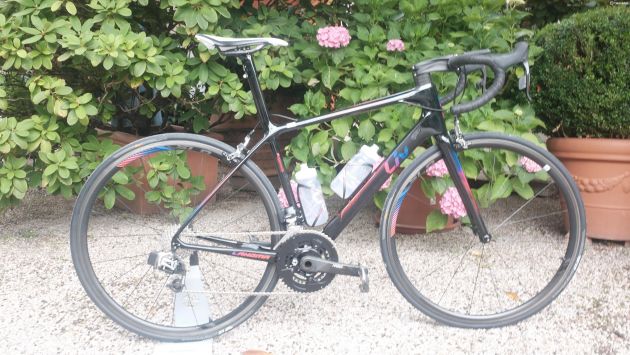
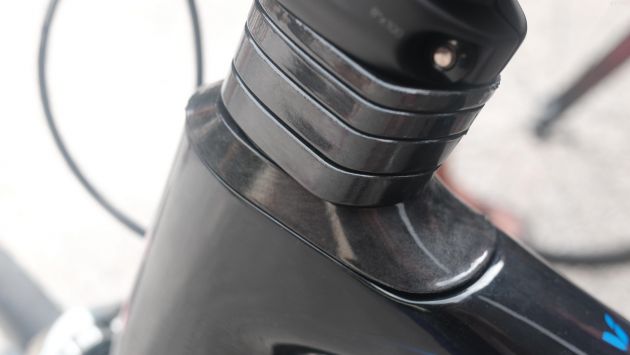
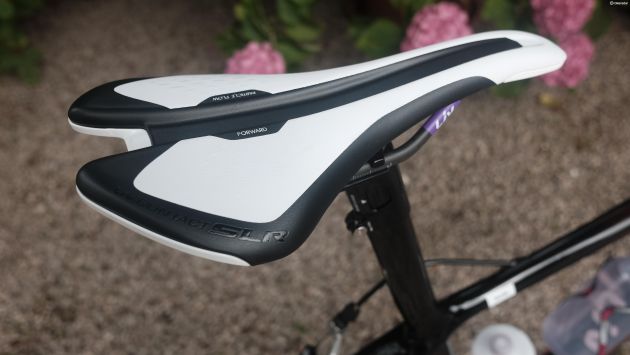
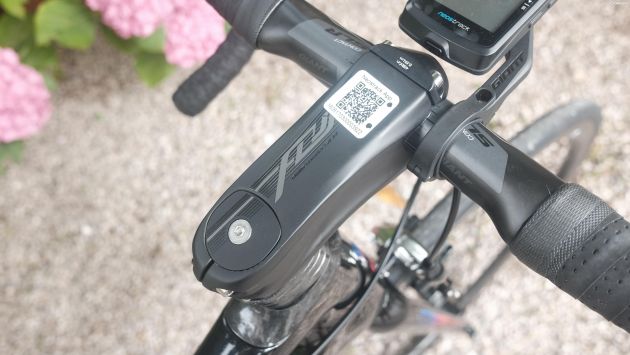
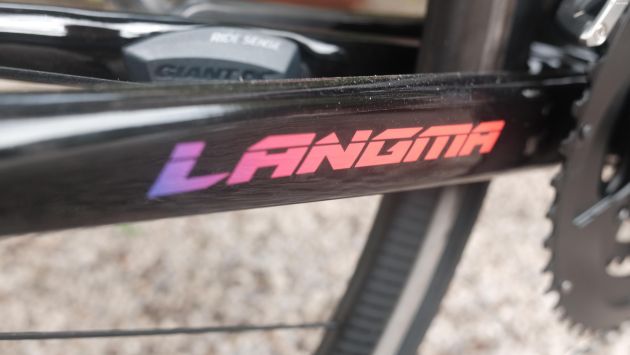
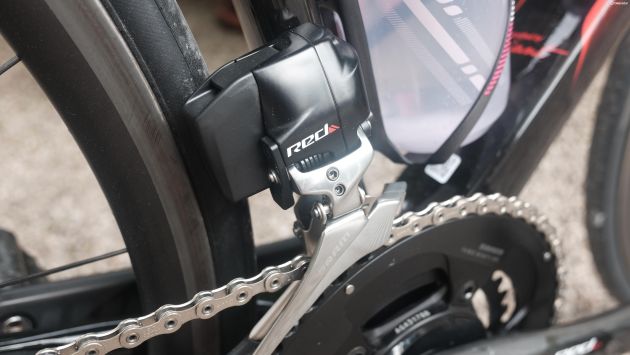
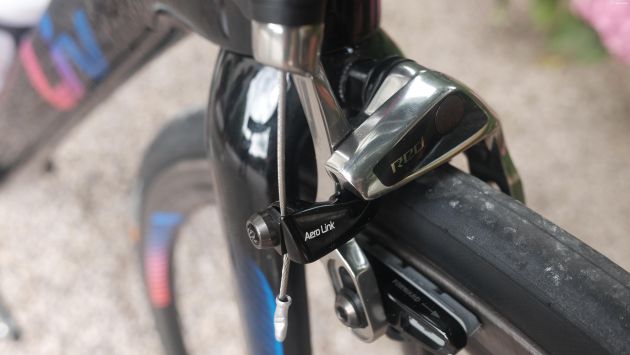
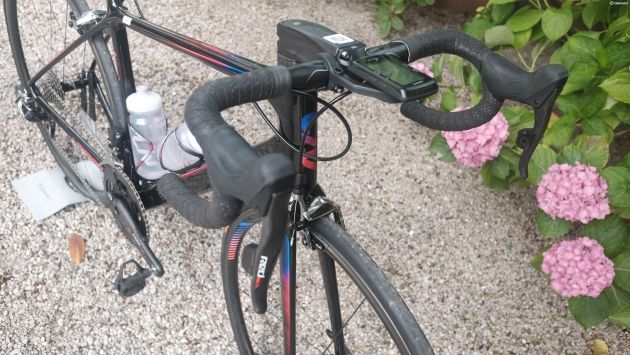
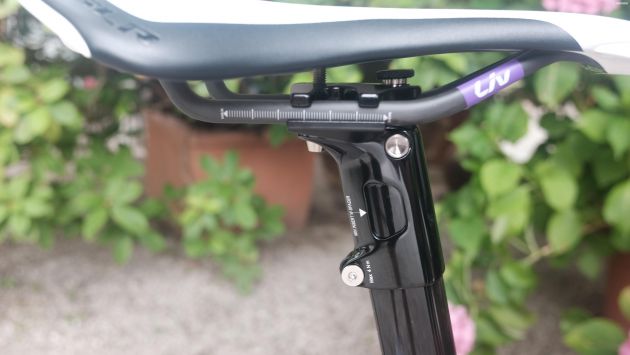
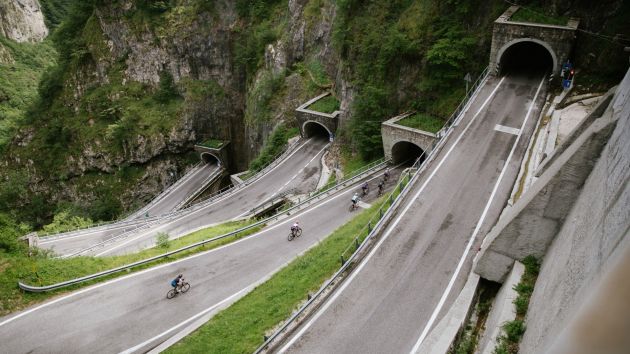
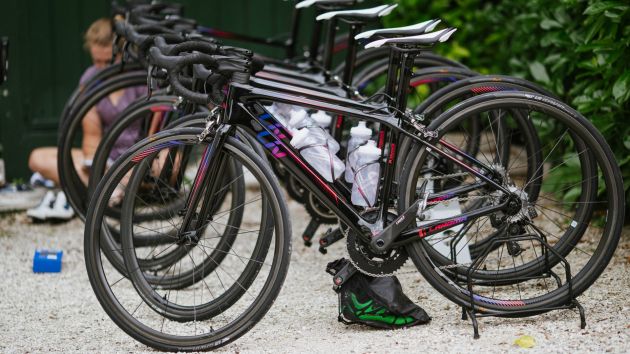
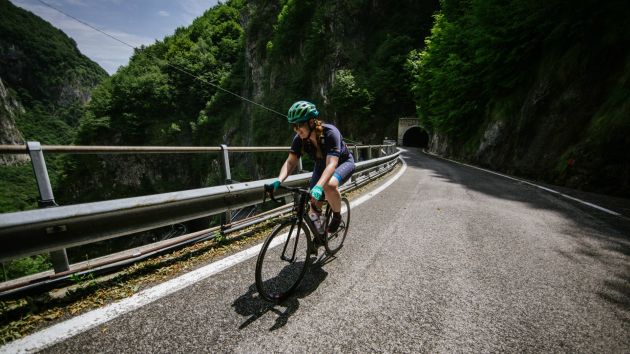


This article originally appeared on BikeRadar
Liv Cycling have just unveiled the new Langma women's road bike, ahead of it's racing debut at the Giro Rosa. Extraordinarily lightweight, the top-of-the-line spec features a full carbon frame and fork, SRAM Red eTap drivetrain, and a story of development and refinement by Team Sunweb Women.
Time was, if you were a woman looking for a high-end, performance-focussed road bike and you wanted something women's specific, your choice was extremely limited. You'd have your pick of unisex builds, which then required set up and tweaking for fit, or there was the custom build option, but most women's specific bikes focussed their attention at the entry-to-mid end of the market.
Not anymore. 2017 has seen a glut of premium performance bikes for women, with more set to be released in the coming months. Joining the fray comes the Langma from Liv Cycling. With the top of the range bike coming in at $9,800 (UK and Australian prices TBC) for a complete build with SRAM Red eTap, you're looking at some serious kit.
BikeRadar headed to Follina in Italy ahead of the 2017 Giro Rosa to meet the team behind the bikes, discover the range and put them to the test on the vineyard-lined and hills and mountains of the region.
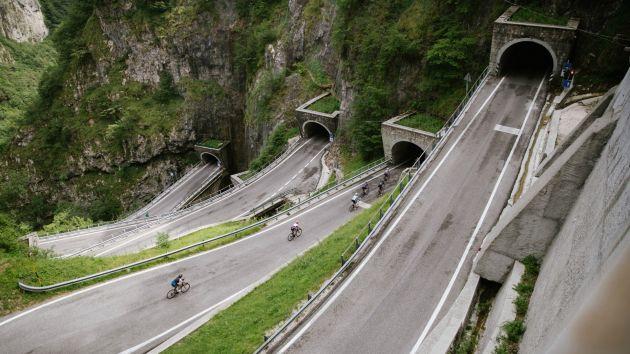
If you're going to test a lightweight bike that's designed for hills and racing, then you need a decent climb. The Passo del Bordo provided.
What's in a name?
If the name 'Langma' sounds familiar, that's because you might know the mountain it refers to by another name: Everest.
Langma, or to give it it's full Tibetan name 'Qomolangma' is arguably the most famous mountain of them all, and also gives you a hint as to the purpose of the bike. More than two years in the making, the Langma has been developed for those riders and pro racers who need the lightest of race bikes, with a focus on climbing efficiency and the tagline 'fly to the summit'.
Climbing is certainly a notable feature of the pro race calendar for 2017, with intense stages in the Giro Rosa and the action at La Course shifting to the mountains and the Col d'Izoard. The reveal on this bike is perfectly timed, and the Liv Sunweb team are set to give the bike it's racing debut in the Giro Rosa over the next few days.
"With this new model, climbing won't be a problem" commented the brand manager for Liv Cycles. "I like climbing. It reflects the reality of life. You gain what you work hard for. I find on this bike I feel comfortable, and can follow a smooth tempo."
Women's specific design
Liv Cycles is a brand that firmly believes that women are best served with a bespoke geometry based on body dimension data, rather than unisex geometry with women's specific touch points, and that there are significant enough differences between male and female anatomy and movement to warrant this.
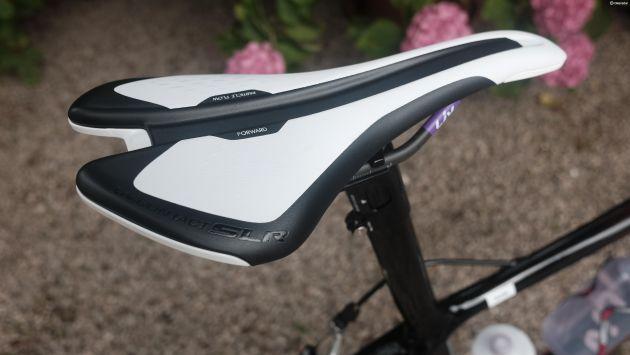
The Langma features a Liv Contact women's specific saddle
Interestingly, while some brands are now moving towards this perspective on bike design — most notably Canyon, which unveiled bikes with women's specific geometry for the first time early in 2017 — others are shifting more toward unisex design, such as Specialized. In Specialized's case, it's a new approach to unisex design that actively incorporates female body dimension data, which rather suggests that bikes labelled 'unisex' prior to this were no such thing. And there is of course ongoing debate as to whether or not the differences between the average man and women are enough to mean that different geometry is necessary.
Back to the Langma: what this means is that although the equivalent bike in the Giant line up in terms of purpose and function is the TCR, this is not a TCR made smaller with women's specific finishing kit. Liv is keen to emphasise that this bike has been designed from scratch, for women.
The company uses a global body dimension database as one of it's starting points, and also works closely with it's pro riders. In this case, Lucinda Brand and Colin Rivera were given multiple prototype test frames to ride and evaluate, with each new iteration refining the performance and feel.
New engineering techniques mean a lighter weight frame with built-in compliance
Liv use the expertise and engineering capabilities of Giant Bicycles for the creation of their frames, and the Langma has such cutting edge engineering that we were't allowed to photograph the model bottom bracket area and seat tube/post that Liv engineer Sophia Shih brought along. Suffice it to say that it's all about the orientation of the carbon fibres, and size specific layups that determine, using computer simulations, the exact optimum amount to use to achieve the correct stiffness to weight ratio.

Sophie Shih, Liv Engineer, explains the aero gains provided by the new Contact stem
Liv claims a frame and fork weight of 1.155kg on the size small, with a complete bike weight of 6.05kg. This makes it lighter than the new Canyon Ultimate WMN CF SLX which comes in at a claimed 7.65kg for the size XS (which would be an equivalent size).
There are a number of interesting design elements on the frame. The frame has been developed to be more aerodynamic, in addition to its light weight, so although the majority of the tubing is rounded, in certain key areas such as the seat tube and post, and the downtime, it forms a d-shape in cross section. This d-shaped downtime flares to a square shape at the bottom bracket - the PowerCore bottom bracket - to increase the stiffness of this area for more efficient power transfer from the pedal stroke.
However, stiffness was not the be-all and end-all, as Shih comments; 'our aim was not to make the stiffest bike, but to make one with optimal stiffness'. To get the best performance, the right balance between stiffness and compliance is needed.
The smaller frame sizes of women's bikes also meant that Liv and Giant were free to develop a different manufacturing technique that allowed frame construction in bigger sections, reducing the need for filler material that is used on other bikes, giving a significant weight saving. 'The frame is almost completely hollow!' Shih smiles. Fewer sections also mean fewer joins, often a point of weakness, so also means a stronger frame.
Also new on the Langma is the Contact SLR Flux stem. Reminiscent of a BMX stem, it's chunky looks belie its light weight as it too is hollow, and gives claimed aerodynamic advantages. It comes with unusually shaped spacers that match the D-shape profile of much of the tubing, and stack neatly on top of each other. Shih was also keen to point out that although the bike is easy to set up to give a race-ready aggressive position, moving the spacers about and flipping the stem can also give a more upright ride position that some riders may find more comfortable.
Another interesting feature is the Variant Seatpost, which extends up beyond the junction with the top tube and seatstays, and is essentially also the seat post. I didn't have time to investigate this fully to determine the practicalities of this system, but rest assured I'll be having a through play with it when the Langma comes in for a full test.
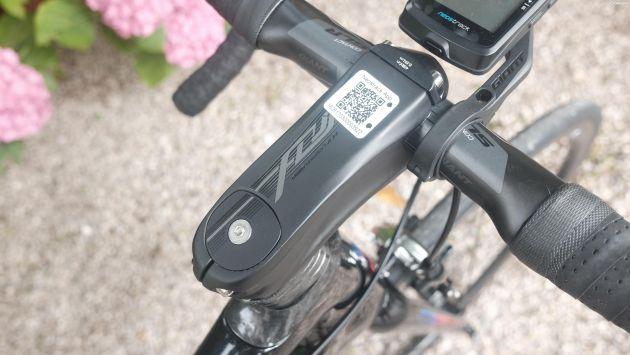
The new stem may look chunky, but it's light and provides significant aero savings according to Liv
Wheelsizes are consistent across the size range at 700c, though handlebar, stem length and crank length do vary.
Handlebars on the XXS are 360mm, on the XS and S 380mm, on the M 400mm and 420mm on the L. The XXS and XS feature 165mm cranks, with 170mm on the S and M, and 172mm on the L.
The Langma Advanced Sl 0 is fitted with a SRAM Red eTap electronic groupset with a 50/34t chainring with SRAM Red rim brakes.
Weight savings are also made via the SLR 0 Wheel System from Giant with Gavia Race 0 tyres, it's lightest and stiffest system. Run tubeless, this saves yet more precious grams. Finishing kit includes a Liv Contact SLR Forward Composite Saddle and Giant Contact SLR Composite Handlebars.
Bonnie Tu, founder of Liv Cycling
Unusually for an industry launch, the woman behind Liv herself came along to share her vision for the bike, her passion for the brand, and ambitions for the future of women's cycling.

Bonnie Tu, founder of Liv Cycling and chairperson of Giant Global Group
Bonnie Tu founded Liv Cycles, the sister brand of Giant Bicycles, as a result exasperation in the lack of women's bikes, kit and product she experienced herself while working as CFO for Giant. Fast forward 9 years, and Liv are one of the most popular bike brands globally, with sales of Liv bicycles accounting for 40% of sales in the US in 2015 for Liv and Giant bicycles together.
Tu is clearly someone who is passionate about changing things for women in the industry, and in her current position as chairperson at Giant Global Group, wields significant enough influence to be able to accelerate change at a rapid place.
A case in point: while at the launch, she asked the gathered journalists whether we'd support a petition to SRAM, Shimano and Campagnolo to make gear shifters and brake levers available in smaller sizes for smaller bike sizes, to allow the women who ride these bikes better control and a more comfortable ride.
Initial impressions
The Langma is built for climbing and it shows. That light weight is most certainly a boon when it comes to tackling climbs like the Passo San Boldo, with 18 switchbacks including 6 hair pins carved into tunnels in the cliff-face itself which the group tackled on the first day of riding, or the Via Bosco del Madean, a 10km climb with an average gradient of 8 degrees, pitching to 11 degrees on some corners.
Performance in climbing is smooth, with body position and responsiveness to the frame that allows you to set up a good steady rhythm at a comfortable pace and stick with it.
Given that I did a fair bit of climbing on the Langma, I was surprised to find how comfy and forgiving a ride it was, especially considering its focus as a race bike. The cunning engineering and carbon layup gives just the right amount of flex in the frame to smooth out the rough, and the benefits are manifold.
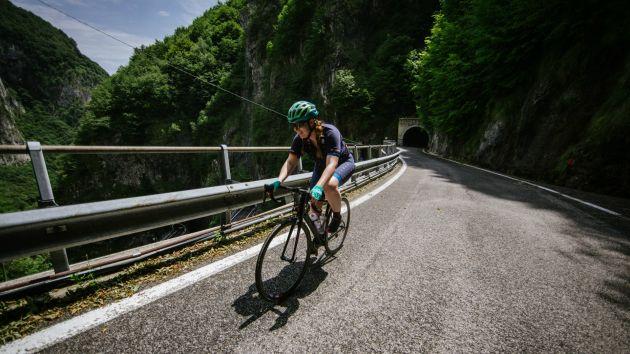
Reaching the top with a smile on my face...I think that's pretty telling
The first is obviously comfort, with arms, back and shoulders remaining fresh and ache-free. The second is traction; a bike that can absorb impact tracks the ground better, feels less skittish and is less likely to be thrown off line by an unexpected hole in the road.
I say I was surprised, because unlike some other compliance systems seen on bikes from other brands, the work here is subtle and hidden. Some systems almost overcompensate and you start to notice the shock-absorbing system working. On the Langma, it seems to do its work quietly and without shouting about it. It's only several hours into the ride you notice that the usual feelings of fatigue are absent.
While the frame is light and has a surprising level of comfort, it didn't ever feel flimsy or frail. Langma is a deceptively strong lady, and pushing the power through that stiff bottom bracket area gets an immediate response.
That said, over the course of the initial rides I didn't get a sense of that lively acceleration that some race-focused bikes have, where the bike has begun accelerating almost before you've put the pedal stroke in. While the comfort was exceptional, the price for that seems to be a little of that glinting edge of aggression, and the bike never felt like it really wanted to go. It'll be interesting to see if this view changes after further testing, and also to see how the bike performs under the professionals at the Giro Rosa.
Overall, based on the first ride, it's an enjoyable experience and that light weight certainly facilitated long climbs combined with a comfortable ride that was easy on the body, leaving me fresh enough to feel like I could ride on and on, and ride again the next day. When you're talking about multi-day stage races with climbing stages, this is an important consideration.
I also appreciated it's stability and smoothness on descents. It feels remarkably planted for it's light weight. Responsive but not twitchy, it was easy to find and hold a tight line on switchback corners, and again that compliant frame meant that uneven road surfaces held no fear, as impacts were absorbed and dissipated without bone-jarring jolts. It inspires confidence in descents.
While I would still much rather see this bike with hydraulic disc brakes - which are available on lower spec models - the control offered by the SRAM Red brakes was more than adequate, and apparently a disc brake version may be forthcoming in the future.
BikeRadar will be getting the Langma in for more extensive testing on familiar ground over the next couple of months, so watch this space for a more in-depth review.
Liv Langma pricing, sizing, geometry and availability
The Langma is available from size XXS up to an L. For reference, I rode a size medium frame and would usually ride a 54cm, and am 5'8 tall.
On the size medium Langma tested, the head tube angle comes in at 72.5 degrees, the seat tube angle at 74 degrees, the stack at 546mm, the reach at 384mm and the wheelbase at 981mm.
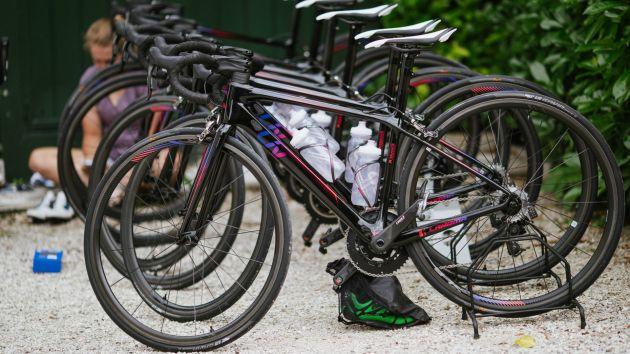
The new Liv Langma Advanced SL 0, lined up and ready for action
There are six bikes in the range overall with several bikes offering different builds that boost the price up and down. We're still waiting for confirmation on pricing and availability on bikes for the UK and Australia, and will update this article as soon as they become available.
Sitting at the top is the Langma Advanced SL 0 which retails at $9,800 and described above.
Next comes the Langma Advanced SL, with many of the same features including the same frame, wheel system, and Contact SLR Flux stem.
Disc brakes first make an appearance in the rage at the Langma Advanced Pro level. There are two bikes here: the Langma Advanced Pro built with rim brakes and the Pro Disc version with flat-mounted disc brakes and thru-axles. Again, the build is similar to the Advanced SL with carbon composite frame but it features SLR wheel system and tubeless tyres and a more traditional seat-post arrangement as seen on the Avail or Envie, and the composite system is of a lesser grade than the top of the range Advanced SL 0.
Finally, the Langma Advanced and Advanced Disc, with a composite frame though with the seatpost seen on the Advanced Pro bikes, plus SLR wheel system and SLR tubeless tyres.
Prices:
- Langma Advanced SL 0 - $9800
- Langma Advanced Pro 0 - $4600
- Langma Advanced Pro 1 disc - $3250
- Langma Advanced disc - $2375
- Langma Advanced 1 - $2300
- Langma Advanced 2 - $1700
- UK and Australian pricing TBC